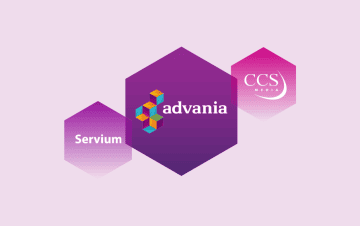Pioneered in its early form by IBM back in the 1960s and later evolved into the modern model we recognise today by VMware in the 2000s, virtualisation has revolutionised the way in which workloads are hosted for businesses all over the globe. By swapping out the bulky footprint of traditionally physical hardware for consolidated virtual machines (VMs), IT teams can enjoy a more flexible, cost-effective environment for their apps that scales seamlessly and is easily managed. But in spite of its longstanding reign, virtualisation is now beginning to be succeeded by a newer, more streamlined concept.
All hail containerisation
While containerisation may have only gained a lot more traction among organisations in recent years, it’s actually been around for a few decades. In fact, the idea of it came into being as early as 1979, but it only really started to find its stride in the early 2000s. What eventually catapulted containerisation into the limelight was the introduction of Docker, an open-source tool that simplifies the creation and delivery of apps using containers. Since then, it has quickly become the preferred method to package applications for many businesses. We predict that very soon it will overtake virtualisation entirely.
What are containers?
A more lightweight version of a VM, a container comprises of everything that’s needed to run an app, including all its libraries and dependencies. Regardless of the target environment it was initially written for, it will run exactly the same in any location. Unlike VMs, containers don’t virtualise the entire hardware stack and, importantly, don’t require a hypervisor to run either. Instead, they only virtualise the hardware’s operating system (OS) and share this between them, radically reducing capacity and driving greater efficiencies. As a result, they are far more portable and easier to manage than VMs, and so more readily moved between different environments. While its popularity has been on the rise for some years now, containerisation has only become a credible option for enterprise with the arrival of Kubernetes.
Kubernetes is king
Kubernetes is a container orchestration system that enables businesses to manage and deploy container-based workloads and services at scale. Originally developed by Google, Kubernetes is now the most prominent platform for container orchestration to date. And it’s no wonder – together containers and Kubernetes are a powerful force.
Kubernetes offers:
- Automation – Kubernetes enables the automation of container deployment and rollout so you can create and remove containers at will.
- Resiliency – If one container goes down, another will automatically take its place, seeing you have sufficient failover to prevent any downtime.
- Load balancing – By ensuring network traffic is evenly distributed, Kubernetes makes certain that traffic to a single container is never too high.
Get your cloud ready for the coronation
It’s important to make sure your cloud infrastructure is prepared for this change. While introducing containers might seem like a long way off today, as the popularity grows and more apps are ready to run this way or you embark on DevOps, these factors may see it rise up your priority list as you seek to capture its value. This all starts with your on-premises environment. Ideally this part of your infrastructure should be ready to support both traditional VM deployments as well as cloud-native container-based apps so you can make the transition as smoothly as possible.
Implementing a hyperconverged infrastructure (HCI) from Dell EMC is the perfect solution. Built to support containerisation and Kubernetes, Dell EMC’s HCI offering facilitates the orchestration of VMs and containers alike, allowing you to benefit from containerisation sooner rather than later.
Discover more about how Dell EMC HCI helps you plan for the future with confidence by downloading our free opinion white paper: Hybrid Cloud starts with a Hyperconverged Infrastructure.
You may also be interested in
A new name for CCS Media & Servium is coming
This summer, Advania UK companies CCS Media and Servium will change their names to better reflect the unified business. Together, we will all be known as Advania.
End of an “EA-ra” but Microsoft CSP opportunities await
We take a deep dive into Microsoft’s curtain call on Enterprise Agreements and the move to CSP. Find out how an expert, partner-led approach from Servium and Advania can help your business optimise spend, drive innovation, and fully leverage Microsoft Cloud.
Why employee intranets are more essential than ever
Intranets are still a vital tool for your business, but today's digital workplace demands more than just a standard SharePoint site. Discover how Fresh Intranet combines the control of traditional systems with cutting-edge Microsoft 365 integration and AI capabilities, creating a truly unified digital experience that works for everyone.
 Stuart Dean
Stuart Dean





